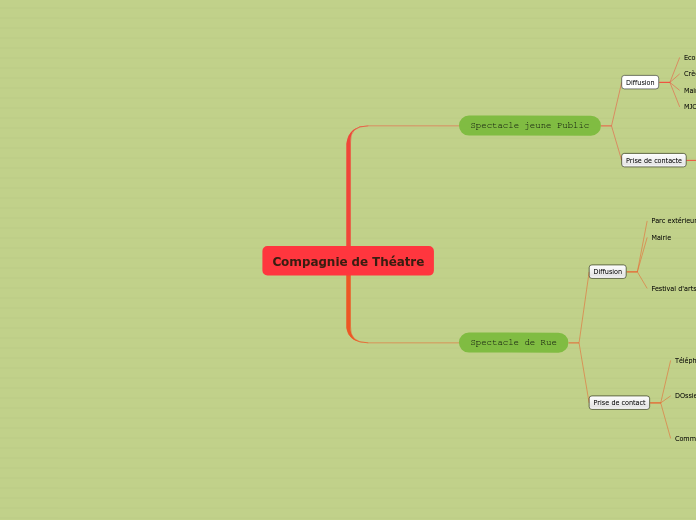Compagnie de Théatre
To name your story, you have to think about the overall message and what you want your audience to understand from the story. Also, make it relevant and easy to remember.
Spectacle de Rue
The middle of the story is where you add layers of complications that will lead to the end. Reveal more about the character's journey. Did their personality go through changes? How did they overcome the challenges? And as you build up the story’s central conflict, make it more personal to that character. Also, from the middle act, you have to lead into the final act.
Prise de contact
Your character(s) need(s) motivation in order to solve the challenge(s).
....
Page Facebook
Teaser spectacle
Affiche
DOssier de diffusion
Téléphone mail
Secondary characters also might have motivs beacuse of which they may cross path with main character or which might trigger them to help the main character.
...
Mairie Villeurbanne/ Les zinvites
mairie.villeubanne@mail.com
04 77 28 59 68
Each story has a main character and that character usually needs to solve a problem or challenge. The character's challenge is the one that creates tension throughout the story.
Festival d'arts de rue
Chalon dans la rue
Les Z'acrco de ma rue
Aurillac
Les monts d'la balle
Les Zinvites
Parc extérieur/Jardins communaux
Spectacle jeune Public
In the beginning of the story (or the exposition), you will need to introduce the setting and characters. You might also want to introduce the main conflict. This part of the story is important because it gives the reader necessary background information and maybe even a first insight into a character’s personality.
Prise de contacte
Characters are essential to a good story. Usually, the protagonist(s) is/are the most affected by the plot. Introduce a character by focusing on their actions, interests, and occupation, as the physical appearance doesn't make a difference in most cases.
Communication
Goodies ?
What is your character's main goal?
fight Evilfind lovedefeat his/her enemyrule the worldmake friendstime travelmake an awesome discoveryOther
flyers
Which traits best describe the character's personality? Choose more if necessary:
introvertedloyalkindindependentquick-thinkingadventuresomeidealisticsweet-naturedcalmrisk-takercreativewittystrictfussyweirdclumsyharshaggressivecarelessclingingcowardlycrueldeceitfulimpulsiveOther
affiches
Choose the type of your chacter:
Protagonist (main character)Antagonist (main character's opponent)Flat (stereotypical character)Round (his/ her personality develops throughout the story)Static (doesn't evolve as a person throughout the story)Dynamic (dramatical change in personality)Confidant (the main character trusts him/ her)Foil (contrasting character who enhances the personality of another character)Other
Dossier de diffusion
Téléphone/Mail
Type in the name of your character.
Diffusion
The setting (time & place) of a story can change throughout the plot.
MJC
Sensory details include sight, sound, touch, smell, and taste. These details are important because they create depth in your setting.
See a few examples below:
- the smell of fresh bread
- the scent of freshly cut grass
- rain falling onto the windshield etc.
Mairie
The weather is an important element in your story because it can highly influence the ambiance and the mood of the characters.
Crèche
The time of the story can also change. It can describe the event of a single day or can include an entire year's plot. Anyway, don't forget to mention it.
Ecoles maternelles et primaire
Your story can take place wherever your imagination will take you to.
For example: in an elevator, in an enchanted forest, etc. Don't forget to give details of the environment each time the setting changes, otherwise, the story can be confusing. Also, mention the seasons as each of them has unique weather and events.










